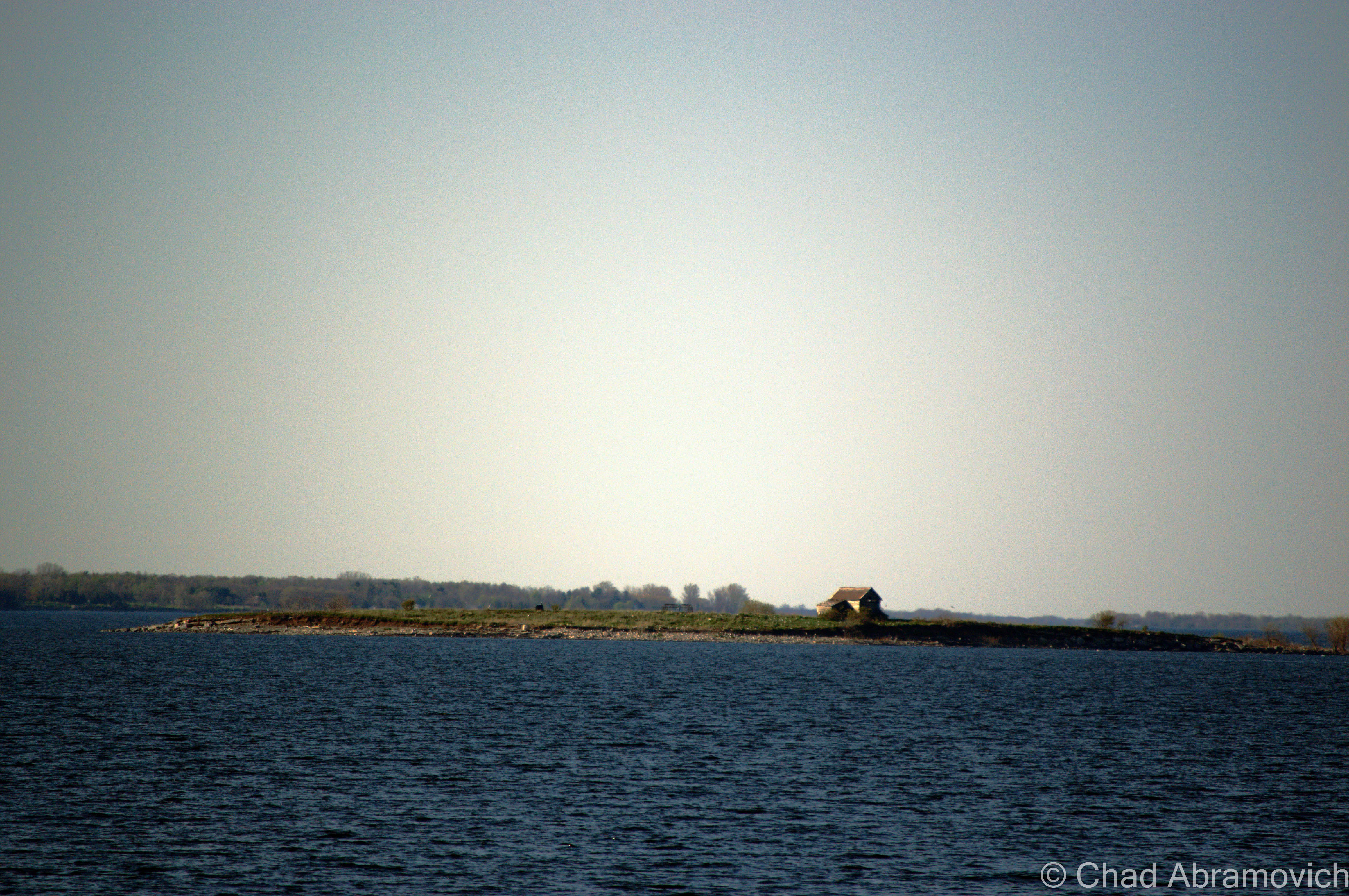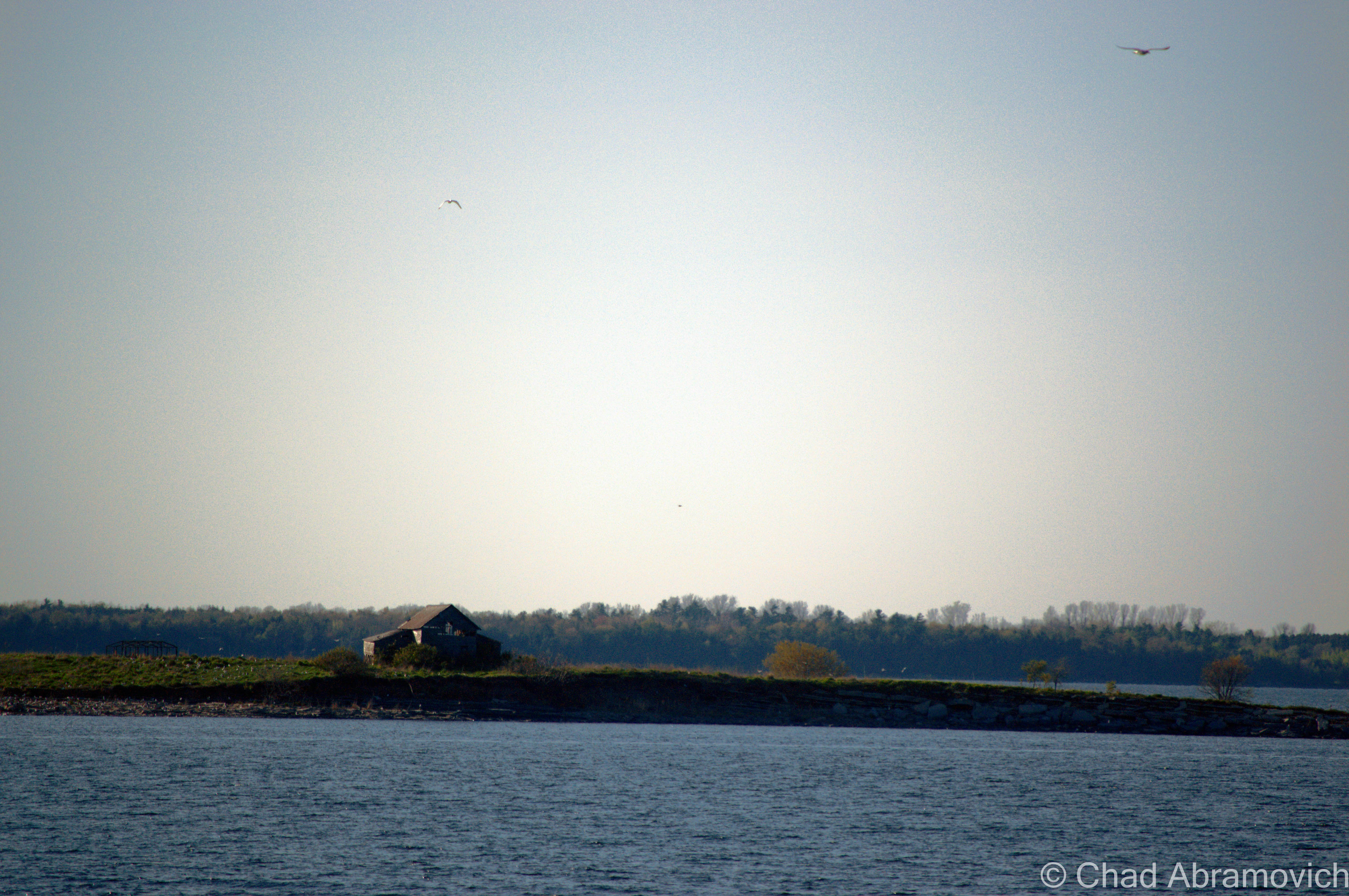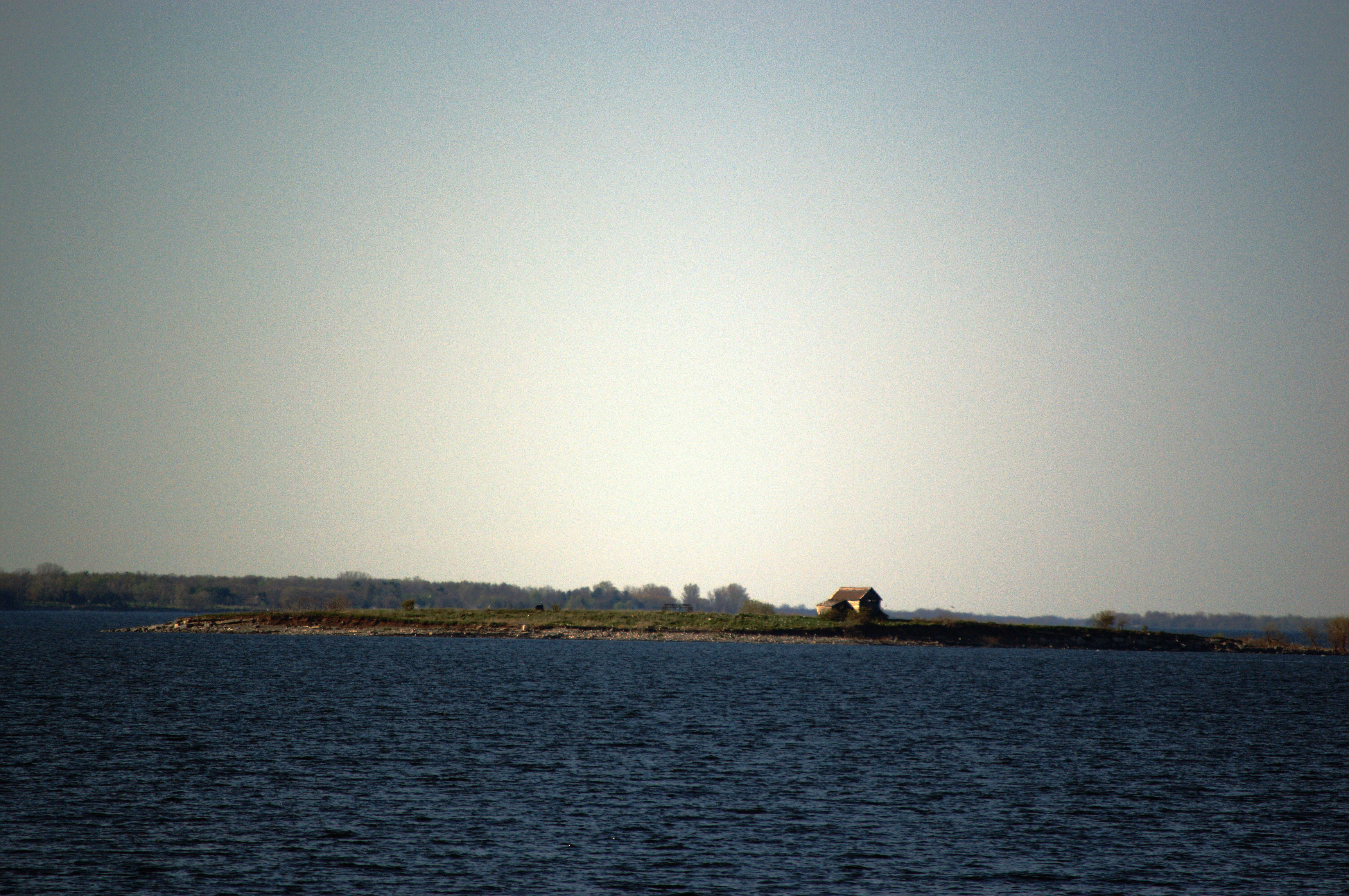Young Island has very little in common with the atmosphere of a faraway planet, and yet, its alien design is completely foreign amongst the rest of the Lake Champlain Valley. A barren wasteland, all the trees and plant life are dead- their leaves and twigs long plucked off. Weeds most commonly found in wastelands are the only living things that can grow and survive in this inhospitable place. In the center of this eerie landscape is the rotting shell of an old cabin- evidence that there once was human habitation here. And everything that is something is covered in toxic bird guano and molted rotting feathers, left to bake under the sultry summers. This intimidating and miserable island enjoys a unique reputation, and perhaps is one of the most mysterious places on Lake Champlain.
Though the island’s official name is Young Island, residents of neighboring communities have another moniker for this foul place; bird island. This blunt nickname also tells us the story of this small island’s mutilation.
At certain times, the rocky slab of land off the coast of Grand Isle seems to actually be quivering, but it’s not the heat of the day or some sinister preternatural force at work. Instead, the culprits are thousands of birds flying around the island. More specifically, Double Crested Cormorants.
Immigrants to Vermont, they were first spotted in the area around the 1970s near Young Island. In 1981, that number grew to 35. Recently, the population exceeded 15,000, (some say over 20,000) with 98% living on Young Island, and more recently, are beginning to become discovered on other islands around the lake.
Cormorants like to nest on remote islands, safe from predators and human habitation, making Young Island an ideal choice. But sadly, they are not welcomed neighbors to our region because their nesting habits are destructive, which are endangering the ecosystem of the lake. Cormorants settle into their new found homes by plucking away at the vegetation and tree branches, using the material for their big messy nests, leaving dead skeletons in their place. Their nests can reach as high as 2 feet tall and are built strong because adult Cormorants can weight up to as much as 12 pounds. The bird guano that now covers the island is acidic, and also helps kill the trees and the shrubbery and its foul smell can radiate for miles when there is a strong wind. As their numbers grow, they become a dominant and intimidating presence and prevent other species from nesting in the area – and Young Island is small, and space is at a premium. So much so, boaters, fisherman and a few residents from as far away as Grand Isle have reported hearing the loud and belligerent sound of countless bird shrieks, as they fight for space to nest. The island has been turned into a war zone.
So, what is being done about this problem? Or perhaps, why has it been allowed to happen? The answer is a simple one; Cormorants are a protected species, with the state arguing that they have as much right to nest and live near the lake as any other species. But recently, The Vermont Fish and Wildlife Department has made exceptions because of an increasing worry that Cormorants will soon migrate and destroy other islands. And this fear has became a reality as neighboring Bixby Island, as well as The Four Brothers Islands in New York have already began to see Cormorants nesting on their shores. The Fish and Wildlife Department is trying to keep the population from exploding, by oiling their eggs so they won’t hatch, and blasting nests from other islands with high powered water hoses. Taking advantage of a unique situation, UVM uses Young Island as a research environment, to study the Cormorants and their nesting habits.
Thanks to egg oiling, some have told me that the population has actually dwindled to “the hundreds” as less and less are returning to Young Island, or migrating to other islands across the lake – but so far, the damage to their other new found homes hasn’t been as destructive. Yet.
Regardless of the accuracy of numbers, spending time on Young Island isn’t for the squeamish. As a matter of fact, I couldn’t think of many other places that you could feel more isolated on. When brave visitors make their way onto the disturbingly intriguing island and through layers of bird guano, the baby Cormorants defend themselves with the only ammunition they have, they throw up whatever they’ve eaten for the day.
And if that isn’t strange enough, Young Island is one of the few places on the lake where Yellow Perch literally fall out of the sky. But these aren’t Perch you want to eat, these have already been eaten, twice – coughed up by a soaring Cormorant. And of course, Cormorants are also considered a threat to the local fish population, with the alarmingly high numbers they consume.
If you wish to see this unusual area for yourself, take a drive to Grand Isle’s West Shore Road, near the Vantines fishing access area, and Young Island will be to the north west. You can’t miss it.


—————————————————————————————————————————————–
To all of my amazing fans and supporters, I am truly grateful and humbled by all of the support and donations through out the years that have kept Obscure Vermont up and running.
As you all know I spend countless hours researching, writing, and traveling to produce and sustain this blog. Obscure Vermont is funded entirely on generous donations that you the wonderful viewers and supporters have made. Expenses range from internet fees to host the blog, to investing in research materials, to traveling expenses. Also, donations help keep me current with my photography gear, computer, and computer software so that I can deliver the best quality possible.
If you value, appreciate, and enjoy reading about my adventures please consider making a donation to my new Gofundme account or Paypal. Any donation would not only be greatly appreciated and help keep this blog going, it would also keep me doing what I love. Thank you!
Gofundme: https://www.gofundme.com/b5jp97d4


